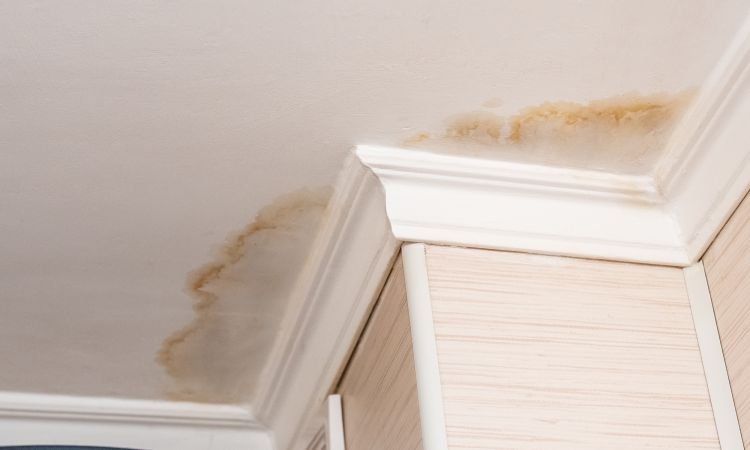 Water damage is a common problem that homeowners face, and it can be costly to repair. From mold growth to plumbing issues, water damage can cause significant damage to your home and belongings. It doesn’t take much time for water damage to happen, either.
Water damage is a common problem that homeowners face, and it can be costly to repair. From mold growth to plumbing issues, water damage can cause significant damage to your home and belongings. It doesn’t take much time for water damage to happen, either.
The following tips will help protect your home from water damage and keep it looking good for years.
1. Hire Plumbing Maintenance Services
Water damage can lead to mold growth, harming your health and weakening your home’s structure. So, taking preventative measures to protect your home from water damage is essential. One of the best ways to do this is by hiring plumbing maintenance services.
Plumbing maintenance services are designed to keep your plumbing system in good working order. A professional plumber will inspect your pipes, drains, and fixtures to ensure they function. They will also identify and fix any potential problems before they become major.
Ensure they are licensed, bonded, and insured when hiring plumbing maintenance services. Visit Steins Plumbing and similar professionals to have them inspect the plumbing system in your home safely.
 2. Install Flood Sensors And Alarms
2. Install Flood Sensors And Alarms
With the rise of technology, there are now ways to protect your home from water damage before it becomes a major issue. Installing flood sensors and alarms is one of the best ways.
-
Flood Sensors:
Flood sensors detect water and moisture levels in your home. They can be placed in areas prone to water damage, such as basements, crawl spaces, and near water heaters or washing machines. Once the sensor detects water, it sends a signal to an alarm, alerting you to the potential danger.
-
Flood Alarms:
On the other hand, flood alarms sound when water is detected. You can place them where water damage can occur, such as near sump pumps or basements. Once the alarm sounds, you can take action to prevent further damage and address the issue.
Installing flood sensors and alarms is a proactive step in protecting your home from water damage. It can save you money in repair costs and prevent potential health hazards from mold and mildew. Additionally, some insurance companies offer discounts for homes with flood sensors. This makes it a cost-effective investment.
3. Seal Cracks And Openings In Your Foundation
One of the most common causes of water damage is cracks and openings in the foundation of your house. These cracks and gaps can allow water to seep into your home, causing damage to your walls, floors, and belongings.
The first step in sealing your foundation is identifying cracks or openings. Check inside and outside your home for any signs of water damage, including dampness or mold. Look for cracks or gaps in your foundation, walls, or floors.
Once you have identified the areas that need sealing, use a waterproof sealant to fill in the cracks and openings. These sealants can be found at your local hardware store and are easy to apply. Follow the instructions on the product and use the bond to the affected areas.
4. Invest In A Sump Pump
A sump pump is a device installed in the basement or crawlspace of your house. It’s designed to pump water out of your home in the event of flooding or excess moisture. Sump pumps are one of the most important basement waterproofing products you can buy for your home.
It collects water in a sump pit basin and then pumps it out of your home through a discharge pipe. The pump is activated by a float switch, which detects when the water level in the sump pit has risen to a certain level.
When choosing a sump pump, it is important to consider factors. These include the size of your home, your area’s rainfall amount, and the type of sump pump that best suits your needs.
5. Keep Gutters And Downspouts Clean
Cleaning your gutters and downspouts is a simple but essential task you should do regularly. It’s best to clean them twice yearly, in the spring and fall, to prevent clogs and ensure they function properly.
You’ll need a ladder, gloves, a trowel or scoop, and a hose to clean your gutters and downspouts. Begin by removing large debris from your gutters and downspouts, such as leaves, sticks, and twigs.
Next, use a trowel or scoop to remove any remaining debris, careful not to damage the gutters. Once the debris is removed, use a hose to flush out any remaining waste and ensure water flows freely through the gutters and downspouts.
Takeaway
Protecting your home from water damage is crucial to maintaining its value and safety. Investing in a sump pump, keeping your gutters and downspouts clean, and maintaining your plumbing system can prevent costly water damage and protect your home for years. By prioritizing these preventive measures, you’re securing your home’s resilience against water damage—essential for peace of mind over here.
Remember to inspect your home for signs of water damage regularly. Address any issues as soon as possible to prevent more significant problems.




